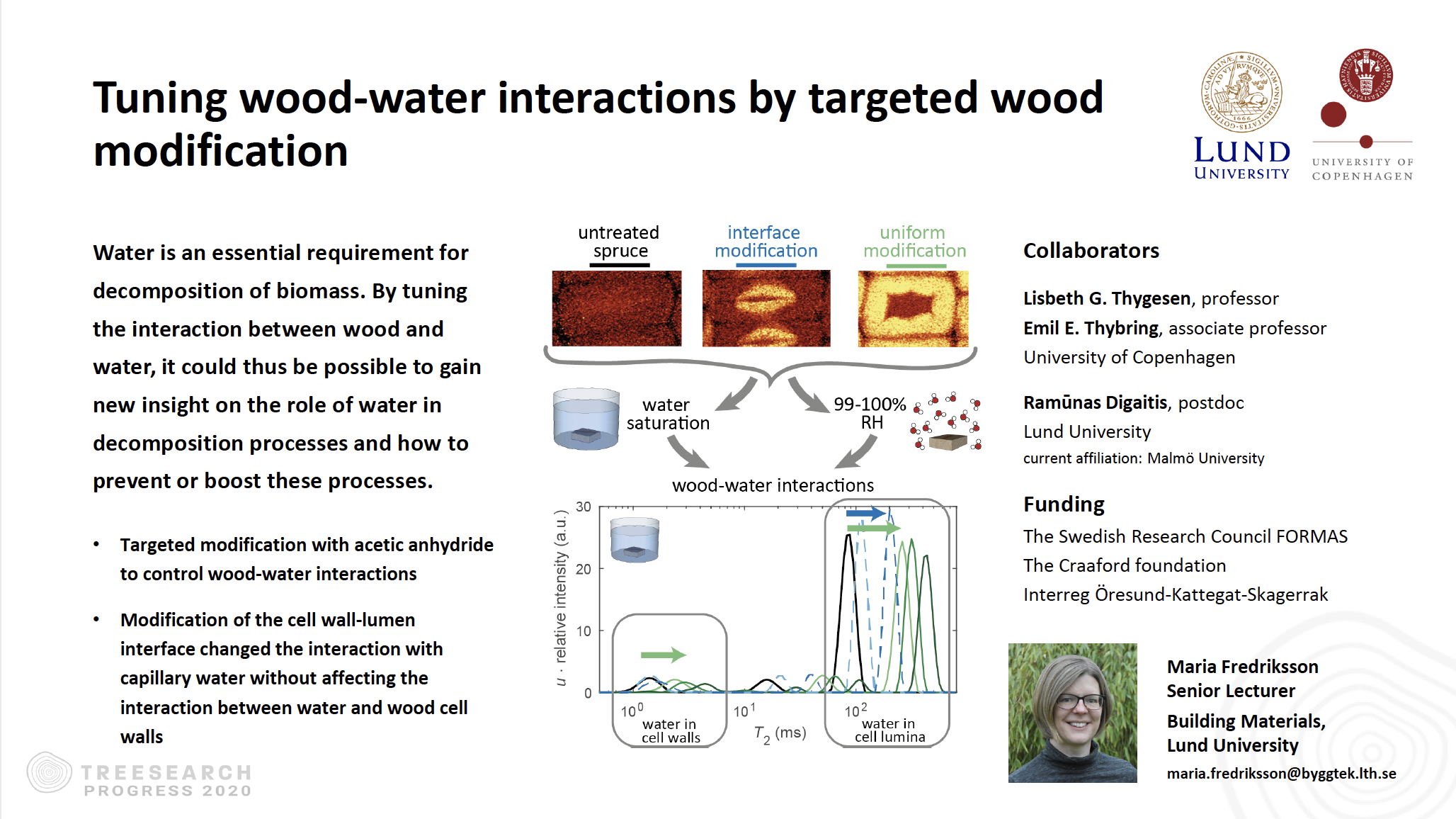Tuning wood-water interactions by targeted wood modification
Water is an essential requirement for decomposition of biomass. By tuning the interaction between wood and water, it could thus be possible to prevent undesirable decomposition (e.g. in wood structures) or boost intentional decomposition processes (for bio-refinery processes). Decomposition by decay fungi most probably requires water both within and outside of cell walls: fungal hyphae need accessible water in the void structure of wood as well as sufficient amounts of moisture in cell walls for fungal agents to diffuse into the solid cell walls. The role of water in decomposition processes is however not fully understood, but new insights can be gained from separately tuning the wood-water interaction in different locations within the wood structure. For this purpose, two chemical modification protocols with acetic anhydride were developed. One with the purpose to modify the interface between cell walls and cell lumina and one that acted uniformly across cell walls. The spatial distribution of the modifications was mapped by Raman micro-spectroscopy while the effect on wood-water interactions was studied by combining Low Field Nuclear Magnetic Resonance and moisture conditioning to well-defined high water activities in a custom-built pressure plate system. The modification of the cell wall-lumen interface changed the interaction between capillary water and wood without affecting the interaction between water and wood cell walls. The results thus showed that it is possible to alter the wood-water interactions differently in specific parts of the wood structure, which enables systematic studies of the role of water in decomposition processes.


